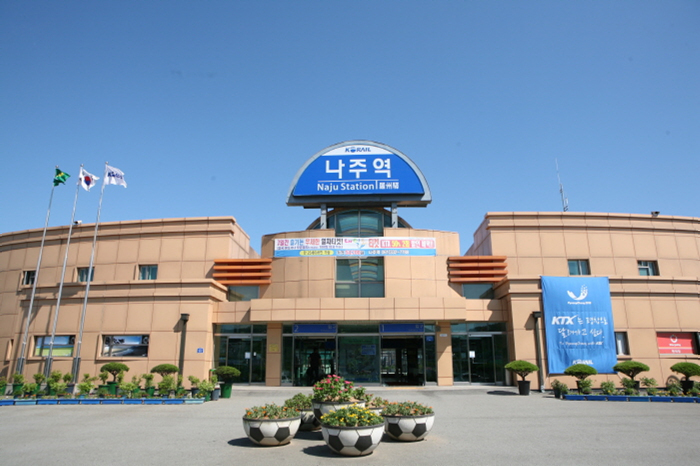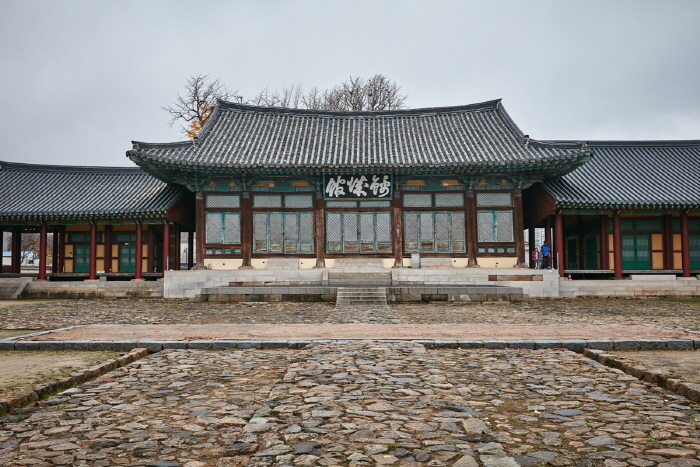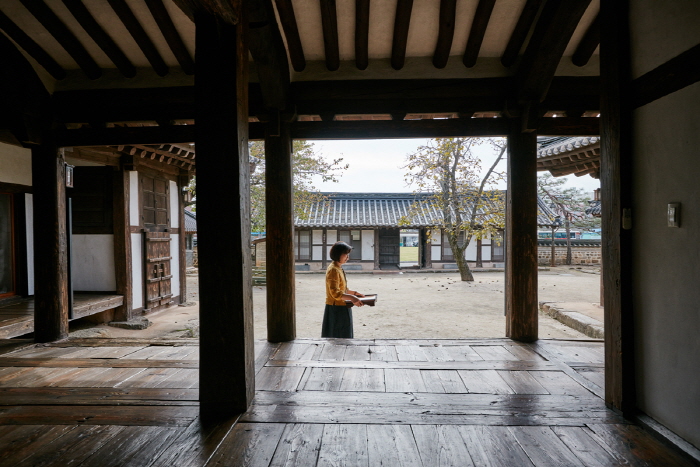Maru-o [Korea Quality] / 마루 O(MARU-O) [한국관광 품질인증]
0m 212 2020-12-12
5-8, Baemet 3-gil, Naju-si, Jeollanam-do
+82-61-331-0700
MARU O is a modern business hotel located at the center of Naju Innovation City. Many public enterprises are clustered around the hotel. Therefore, the hotel is loved by business travelers visiting the city, while the neat facilities also attract casual travelers. The Bitgaram Lake Park, right in front of the hotel, is a great place for a walk along the pleasant park surrounding a small lake. At the heart of the park stands Baemesan Observatory where one can enjoy an unhindered view of Naju Innovation City.
The hotel offers a variety of services as well. In particular, there is a charger for electric car drivers in the underground parking lot. Front desk provides tourist guidebooks on Naju and the Jeollanam-do region and lends mobile phone charger for free.
MARU O is about a 12-minute drive away from the KTX Naju Station, and 15 minutes by car from the inter-city bus terminal, Yeongsanpo Hongeo Street or Naju Gomtang Street. In particular, Naju Gomtang Street is a region where famous Gomtang (Naju’s representative food) restaurants are concentrated. As Hayanjib, Naju Gomtang Noamjib, Naju Gomtang Wonjojib and 60-year Nampyeong Halmaejib (some of the best known places) are all found here, just drop in anywhere and you will be able to taste the authentic taste of local dishes.
Musée de la Poire de Naju (나주배박물관)
2.4 Km 7221 2021-03-29
5838, Yeongsan-ro, Naju-si, Jeollanam-do
+82-61-339-2590
Le musée de la poire à Naju dans la province du Jeollnam-do a ouvert ses portes en 1992 pour étudier et promouvoir la célèbre poire de Naju.
Connue comme étant le lieu d’origine des poires coréennes, Naju possède même un musée dédié à ce fruit. Le musée de la poire de Naju propose tout ce que vous aurez besoin de savoir à propos des poires, comme par exemple l’histoire des différentes variétés, les méthodes de conservation et le processus de culture. Les visiteurs peuvent également acheter des poires dans le centre de distribution des poires adjacent au musée.
Sane Flower [Korea Quality] / (주)산에는 꽃이피네 [한국관광 품질인증]
4.0 Km 7470 2020-09-03
20-1, Dongnyeok-gil, Dado-myeon, Naju-si, Jeollanam-do
+82-10-4612-4232
‘Flowers Blossoms in the Mountains’ is a hanok-style accommodation located between the House of Hong Gi-chang, a local cultural heritage, and Gyeeun Historic House (or the House of Hong Gi-eung; National Folklore Cultural Heritage No. 151) in Dorae Hanok Village. Built in 1917, the house was built with carefully selected high-quality wooden materials without using nails. It was renovated for use as tourist accommodation in 2011, opened as a hanok style of accommodation in 2013, and renovated again in 2014. On this occasion, the old doors were replaced and made into the tables that stand in the grassy courtyard.
The house has a total of 4 rooms. Each room can accommodate up to 2 to 4 people. Each room is equipped with a kitchen, bathroom, air-conditioner, TV, toiletries, plates, and so on.
This well-insulated hanok house is decorated with hanji (traditional Korean paper handmade from mulberry tree) and various antique items. Tables are available for guests in the courtyard, of which a stylish stone-paved corner stands out in particular.
There is a walkway established by Naju City in front of the house, and a vegetable garden near the house. Guests can see gourds and sponge gourds in the yard and acorn trees on the hill behind the house. In addition, the Metasequoia Street that runs through the grounds of the Naju Forest Resource Institute is just one minute’s drive from the house.
Moreover, as the village contains many houses that are classed as cultural heritages, the owner guides guests around them at weekends. Surrounding tourist attractions include Bulhoesa Temple and Najuhyanggyo Confucian School.
Doraemi House [Korea Quality] / 도래미하우스 [한국관광 품질인증]
4.2 Km 4413 2020-09-09
18-26, Dongnyeok-gil, Dado-myeon, Naju-si, Jeollanam-do
+82-10-8616-6725
Doraemi House is a hanok stay type of tourist accommodation located in the village of Dorae, Naju City, Jeollanam-do Province. The house was named Doraemi, meaning “the beauty (mi) of Dorae”, in the hope of conveying the beauty of the village. The accommodation consists of three hanok structures - the Bonchae, Sarangchae, and Byeolchae. The Bonchae consists of two bedrooms with a garret; the Sarangchae has 2 bedrooms flanked by a living room; and the Byeolchae, located on a hill, is a cozy single room, with a wooden swing placed in front of the building. Doraemi House is decorated with cozy, natural items that create a relaxing atmosphere. A pleasant forest trail passes by the house and leads to Gyeeunjeong Pavilion, one of the village’s three pavilions, and a small pond. The owner of the house has established a small reading space filled with picture books next to the Bonchae building, where guests can enjoy reading amid a tranquil atmosphere.
Gare de Naju
6.2 Km 11802 2016-08-08
56 Naju-ro, Naju-si, Jeollanam-do
La gare de Naju se trouve sur la ligne ferroviaire Honam qui dessert les provinces du Jeolla-do. La gare se trouve à Songwol-dong, Naju-si dans la province du Jeollanam-do. L’ancienne gare de Naju, autrefois située à Jungnim-dong, a été le point de départ du mouvement d’indépendance des étudiants de Gwangju en 1929 qui résulte des conflits entre les étudiants coréens et japonais qui transféraient pour Gwangju. Cette importance historique a retardé le déplacement de la gare de Naju, mais avec l’ouverture partielle de la ligne Honam à double voie le 10 juillet 2001, la gare de Naju a été fusionnée avec la gare de Yeongsanpo et déplacée à son emplacement actuel en face de la mairie de Naju. Le bâtiment de l’ancienne gare de Naju était trop vétuste et trop petit pour accueillir tous les passagers de la région, et c’est la gare de Yeongsanpo qui a été utilisée pour pourvoir aux besoins des passagers. Après la fusion des deux gares, tous les trains normaux de la ligne Honam, ainsi que certains trains KTX s’arrêtent à la gare de Naju.
Pavillon Geumseonggwan à Naju (나주 금성관)
6.4 Km 30633 2023-03-24
8, Geumseonggwan-gil, Naju-si, Jeollanam-do
+82-61-339-8611
Le pavillon Naju Geumseonggwan servait de guesthouse pour les diplomates et politiques durant la dynastie Joseon. Le bâtiment a été construit entre 1475 et 1479. La structure a été reconstruite sous l'occupation japonaise avant d'être restorée dans son état initial en 1977.
나주목사내아
6.4 Km 27266 2021-02-24
Jeollanam-do Naju-si Geumseonggwan-gil 13-10
+82-61-332-6565
나주목사내아는 조선시대 나주목사의 관저로서 상류주택의 안채와 같은 평면 구조로 이루어져 있으며 안채는 순조 25년(1825년) 건립된 것으로 건물 구조는 전통 양식인 한옥 ㄷ자형이다. 나주목사내아는 현재 전남 문화재자료 제 132호로 지정되어 있다. 나주는 조선시대 관아건물이 많이 남아있어 문화유적 답사지로서 적합하다.
* 규모 - 내아 1동, 행랑채 1동
3917 Majung [Korea Quality] / 3917 마중 [한국관광 품질인증/Korea Quality]
6.9 Km 30 2023-04-13
42-16, Hyanggyo-gil, Naju-si, Jeollanam-do
Located in Gyo-dong, Naju-si, Jeollanam-do, 3917 Majung is a cultural space combining a hanok (traditional Korean house) cafe, modern cultural experiences, and hanok guesthouse. The name “3917 Majung” refers to its goal of “welcoming (majung) the modern culture of Naju in 1939 anew in the year 2017.” Spread out on a wide land area of 13,223 m2 are four buildings of Nanpajeong, Sarangchae, Mokseowon, and Siseoheon. All buildings take after the unique combination of Japanese- and Western-style housing commonly seen in the late Korean Empire period.
Nanpajeong is a pavilion constructed during mid-Joseon period, named after its most famous guest Jeong Seok-jin (pen-name: Nanpa), a scholar who led an uprising against Japanese imperialism in late Joseon period. There are two ondol (under-the-floor heating system) rooms in total, separated by a central wooden-floor hall (daecheong), one supporting 3 to 4 guests, one ideal for 2 to 3 guests. The restroom, which is also fitted with a shower booth, is located outside the building.
Eunhaengmok Room 1 and 2, which are housed in the Sarangchae building, are tatami rooms with balcony. Sarangchae’s shower and restroom is located in the building. Mokseowon is likewise made up of three tatami rooms, separated by open floor space and an attic. The shower and restroom is located outside the building. Siseoheon houses a 4-person room and the largest room in the complex, capable of supporting more than 10 guests. There are 2 restrooms and 2 restrooms with shower facilities, making the building ideal for group events.
Terminal des bus de Yeongsanpo
7.1 Km 1201 2011-02-19
191 Ichang-dong Naju-si Jeollanam-do
+82-61-332-2344/2345
![Maru-o [Korea Quality] / 마루 O(MARU-O) [한국관광 품질인증]](http://tong.visitkorea.or.kr/cms/resource/14/2593514_image2_1.jpg)
![Sane Flower [Korea Quality] / (주)산에는 꽃이피네 [한국관광 품질인증]](http://tong.visitkorea.or.kr/cms/resource/98/2574998_image2_1.jpg)
![Doraemi House [Korea Quality] / 도래미하우스 [한국관광 품질인증]](http://tong.visitkorea.or.kr/cms/resource/55/2575455_image2_1.jpg)




![3917 Majung [Korea Quality] / 3917 마중 [한국관광 품질인증/Korea Quality]](http://tong.visitkorea.or.kr/cms/resource/24/2706124_image2_1.jpg)
 Français
Français
 한국어
한국어 English
English 日本語
日本語 中文(简体)
中文(简体) Deutsch
Deutsch Español
Español Русский
Русский